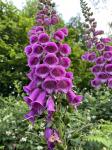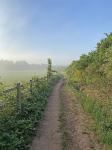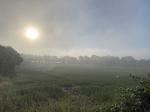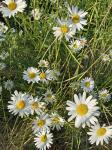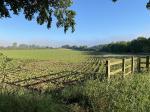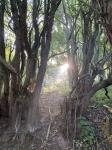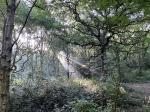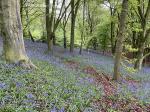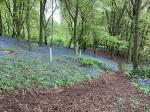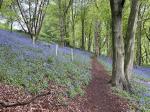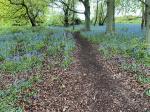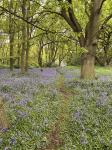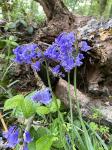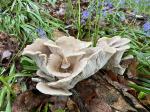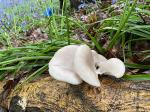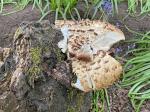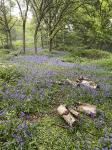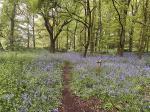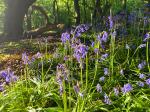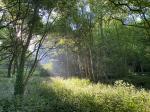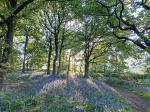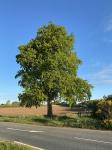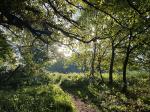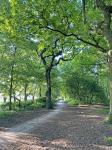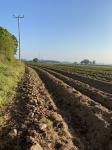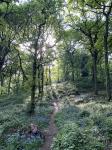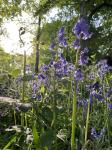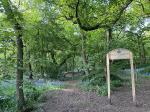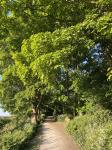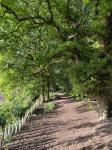Brayton Barff Through the Seasons.
Set in the Vale of York, South West of the market town of Selby and between the villages of Thorpe Willoughby and Brayton, lies Brayton Barff, a sandstone Hill approximately one hundred and fifty feet in height which was formed by glacial movement during the last Ice Age. It is a significant landmark in an otherwise flat landscape.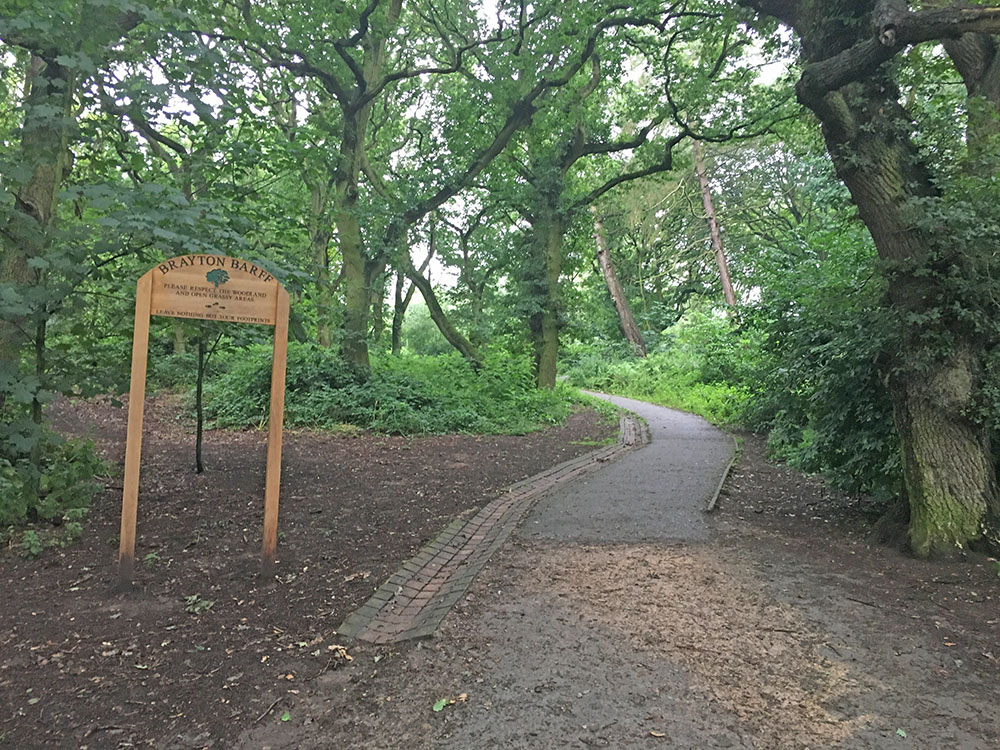
Today the site is primarily owned by Yorkshire Water with Selby District Council owning a small patch of the land adjacent to the A63 Selby bypass. A large underground reservoir occupies the centre of the site which delivers water to around 4.7 million customers throughout Yorkshire.
Within the Barff woodland over 40% of the trees are Sessile Oak which are generally found in semi natural woodlands in the north of the country. These trees are so called because its acorns are not held on stalks, like those of the English Oak (Pedunculate), but attached directly to the outer twigs. There are also several English Oak trees as well as some cross-hybrid oaks. These trees are known to support many species of flora and fauna, invertebrates, mosses, lichen and fungi.
During the Victorian times it is thought that the shipbuilders on the east coast would come over to the Barff for selected cuts of timber to build their sea going vessels.
The Barff also has a variety of other trees including Silver Birch, Beech, Sycamore, Holly, Rowan, Scots Pine, Alder, Hawthorne and European Larch. There are also several Yew, Willow, Hazel, Horse Chestnut and Wych Elm. As with similar woodlands there are a variety of bushes, including Honeysuckle, Elderberry, Gorse, Broom and Buddleia.
The history of Brayton Barff is quite vague, apparently during 1803 a beacon was lit on the Barff when the country was threatened with an invasion by Napoleon. In May 1935, to celebrate King George V's Silver Jubilee, a Bonfire was lit on the Barff as part of the celebrations.
Early issues of Ordnance Survey Maps dated 1903 clearly show a rifle range on the Barff, extending out to Mill Lane. During the 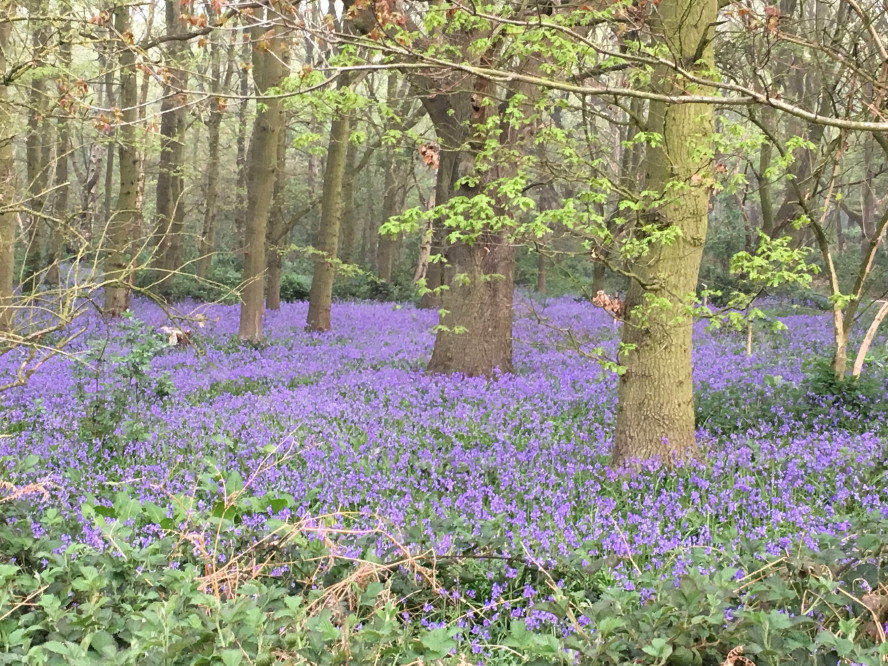
Between 2001 – 2004 the A63 Selby bypass, 10km twin lane single carriageway was constructed which severed the South West corner of the Barff, adjacent to Selby Golf Course and resulted in a slight redesign of several holes on the golf course. Wooden fencing was erected as a result of this new road running alongside of the Barff and a footbridge constructed over the ‘new road’ following the line of the Bridal way which extends from Mill Lane. Around 2005/2006 a definite 2metre wide limestone aggregate footpath was laid forming a circular path around the outer edges of the woodland. This footpath is approximately 1.2 miles in length and takes about 30 minutes to circumnavigate at a leisurely pace.
In 2012 the Barff was declared an Ancient Oak Woodland and as such throughout 2012 and 2013 significant work had been carried out by the relevant agencies to cut and remove large swathes of non-native trees, creating at that time huge scars on the landscape. Some three years later the planting of the native trees have become well established and are flourishing. Ongoing maintenance work on the footpath around the bottom of the Barff was completed during the Summer of 2016.
A second phase of woodland maintenance commenced during the Autumn of 2019 with the removal of many old and diseased trees and the cutting back of the Gorse and Broom bushes, especially adjacent to the ‘bypass trail’, this work continued through till March 2020 with re planting continuing into April 2020.
Brayton Barff is a popular site for walkers and bird watchers alike and a path circling the outer perimeter of the Barff makes a pleasant thirty minute walk, giving views looking over towards Selby and the village of Brayton as well as the power stations of Drax and Eggborough..jpg)
For the early risers it is a great place to see some stunning sunrises over the villages of Brayton looking towards Drax Power Station, the same with the Sunsets looking over towards Eggborough and Monk Fryston.
The Barff changes with the Seasons and every visit can reveal something new, the woodland is a haven for wildlife. Records show that since 1982 one hundred and twelve species of bird have been seen in the woodland and at least 40 of those have bred here, including Tawny Owl, Buzzard, Green Woodpecker, Spotted Flycatcher, Goldcrest and Nuthatch to name just a few. On average over 70 species of bird are recorded each year. Further details of the bird life on the Barff can be found on the Brayton Barff Group Facebook page, especially the posts from Derek Cooper. Today ‘The Friends of Brayton Barff group’ led by Derek and a small team of volunteers help keep and maintain the cleanliness of the site as well as recording the wildlife and bird sightings.
The Barff is also home to fifteen different species of mammals, including Muntjac Deer, Pipistrelle Bat, Fox, and Field Vole.
Over eighty species of plant and wildflowers have been recorded, included Bee Orchid, Northern Marsh Orchid, Wood Anemone, Marsh Ragwort, Bluebell, White Bluebell, Bittersweet and Purple and White Foxgloves. Over twenty species of Butterfly have been recorded, including Marbled White, Brown Angus, Speckled Wood, Comma and Brimstone.
During the Autumnal months fungi thrives in this woodland environment, species including Fly Agaric, Beefsteak Tree Fungi, Chicken of the Wood, Sulphur Tufts, Stinkhorn, Ink cap, Puffballs and Hoof Bracket are just some of the many varieties that can be found here.
Click on the galleries shown below to expand the albums.
May 2020 - Brayton Barff.
Well here we are Spring Bank Holiday week and the last week of May 2020. The Barff, like everywhere else has been affected by the effects of the Coronavirus Pandemic which is sweeping the country (and rest of the world) at the moment. The car park to the Barff which had been closed since the 25th March, following the Government guidelines was reopened on the 31st May. During the lockdown period there have been significantly less visitors than usual at this time of year on the Barff, one of my noticeable observations has been the number of sightings of Roe deer, on and around the woodland and along the ‘Bypass trail’.
Weather wise, after a few wet and damp mornings at the start of the month, May has been extremely dry, the Met office have stated that May was the sunniest month on record in England with 696 hours of bright sunshine recorded in the Spring, which has exceeded the previous high of 594 hours set in 1948! It has also been the fifth warmest on record and in certain parts of the UK the driest Spring since 1862.
One of the highlights of the month for me as well as seeing the Deer was hearing the Cuckoo for the first time this year. I was on the Barff on Sunday 3rd May at around 6.00am, we had had a lot of overnight rain earlier on during the darkness hours which made the walk quite wet underfoot, I had watched the sunrise as I walked the dogs to the Barff from home, unfortunately by the time I reached the woodland for a photograph the sun had risen and was quite high and bright in the sky above Brayton church. The Birdsong at this time in the morning is quite beautiful, and seems to resonate through the trees, I needed to be up a little earlier in the day though to hear it at its best. It was quite strange really as I had been speaking to my friend Derek on the Barff shortly after I arrived and he if I had heard the Cuckoo yet, at that time neither of us had, I continued my walk with Meg & Gracie and had been on the Barff for about one hour when I first picked out its distinctive call, alas I never caught a sighting of it but it was great to hear it again amongst the woodland trees.
The Birdlife on the Barff always seems to amaze me, throughout the winter months we have the resident birds such as Blackbird, Robin, Goldfinch and Wren and Dunnock to name just a few then as Spring arrives we have our visitors, the Warblers, Chiffchaff, Linnet and Whitethroat, all with their distinctive song, it really is nice to hear and see them in this setting.
It has been a pretty good year for the Bluebells, being in flower throughout all of April, they started to pass their best during the first week in May, to be overgrown by the nettles and ferns, as I write this note towards the end of the month some of the nettles are over 6ft tall and the Bluebells have long gone for another year. The Brambles, Elderberry and Hawthorn bushes are in full flower at the moment and it looks like being a bumper year for berries looking at the large amounts of florets on the bushes at the moment. The Honeysuckle around the woodland are in full flower at the moment too, filling the air with a lovely scent as you walk between the trees, the Foxgloves are shooting up too, their long purple and red coloured florets shaped like trumpets provide an excellent food source for the bees. Other plants such as Campion, Herb Robert and Greater Stichwort are also in abundance too.
Greater Spotted Woodpeckers have been busy this year, I have heard at least four nest sites around the woodland with chicks, their parents not so vocal at the moment as they are busily providing food for their babies, they should be fledging soon, weather permitting. I have yet to see the Tawny Owl chicks this year, I have heard the parent birds calling to each other quite regularly last month, but since the arrival of their chicks have been relatively quiet, though I have seen several pictures of them on social media, it is just about being in the right place at the right time.
During the middle part of the month the Government eased some of the lockdown measures which as a result, increased the visitors to the Barff, this raised several problems due to the car drivers parking on the side of the narrow road, between the Barff car park entrance and the village of Brayton, at one point I counted a line of fifteen cars parked half on and half off the road, causing a considerable traffic hazard as that part of the road carries a 60mph speed limit. Unfortunately, this increase in traffic and footfall brought with it an increase in rubbish and litter left needlessly by these visitors.
We were hit with a couple of early morning light frosts on the 14th & 15th May, but otherwise we have had some beautiful mornings, I recall only a couple of occasions when I have had to wear my waterproof jacket for the morning walk. What has been quite noticeable towards the latter part of the month has been the amount of leaf litter on the ground, especially from the Oak trees. This is quite a rare phenomenon in this country only occurring during periods of prolonged dry weather. Oak trees tend to shed their foliage to conserve moisture, food or energy in times of drought or just a lack of rain, fortunately they do tend to recover after the dry spell has ended and will produce new leaves later in the year.
As the month comes to an end the days have lengthened significantly, sunrise is currently around 03.45am, too early for me, although I am frequently awoken by the dawn chorus at this time of day. There are lots of Whitethroat, Yellowhammer and Skylark singing over the fields. Willow and Garden Warblers are very vocal, along with Blackcap, Chiffchaff, Wren and Tree Creepers. Song Thrush, Chaffinch, Bullfinch, Great and Blue Tit, Blackbird, Dunnock and Robin all seem to accompany me on my wanders around the woodlands with Meg & Gracie. It has certainly been a good month to be on the Barff.
|

